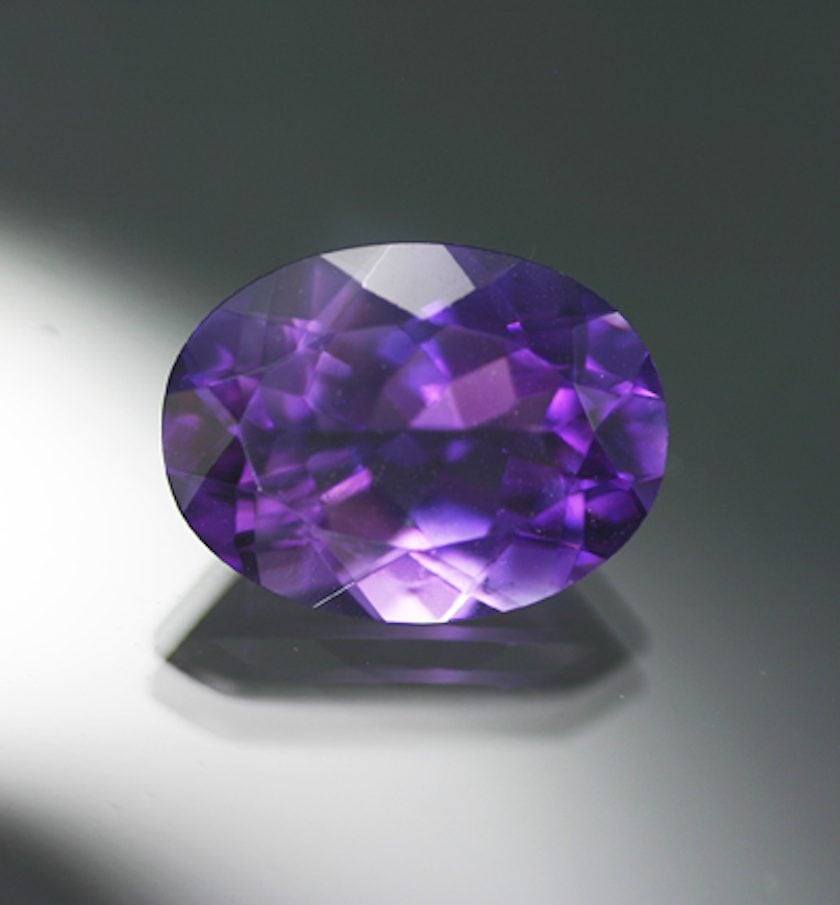What is the Average Gemstone Faceting Yield?
What’s the average gemstone faceting yield from a single piece of rough? Learn how to estimate how much material you’ll need to cut to get the gem you want.
1 Minute Read
Answer: To judge your yield from facetable material, you first have to determine how much of the stone is clean and cuttable. If it doesn't need any trimming, that's easy. Otherwise, you have to estimate how much weight to remove to get a clean piece you can dop and facet.
Estimating How Much Weight to Remove
I find it easiest to judge that as a percentage. For example, if I see a fracture that needs to be cut out, I'll estimate how much the area to be removed will weigh. If that is 10% or 20% of the stone, I'll then use a calculator to figure how much of the piece is suitable for faceting.
The more evenly shaped the rough, the higher the yield. If the stone has a lot of projections that need to be cut down, then the yield will be lower. If the stone is exceptionally well-shaped (for example, already tapered towards the culet), you might be able to get 40% or more.
Average Gemstone Faceting Yield for Custom and Factory Cutting
The yield from a clean, facetable piece will usually range between 25% and 33% with custom cutting and 15% to 25% with factory cutting.
What Size Gem Do You Need?
The next determining factor for gemstone faceting yield is what size finished piece you need. If you're free to cut for maximum yield, you can expect 33% weight retention from a relatively chunky piece of rough. On the other hand, if you need to cut the stone to fit a calibrated setting, your yield may be much lower. How much lower will depend on the individual piece of rough. For example, if the rough will allow a 9 by 5 mm oval, that would weigh close to 2 carats. However, if you need to cut it to the closest calibrated size, a 7 by 5 mm oval, that would weigh closer to 1 carat. That's a major weight reduction. In this case, you should consult with your customer before proceeding.
Consider Your Customer
A custom-made setting to hold an unusually-sized amethyst may not be in your customer's best interest financially. However, if the gem were valuable, it would be worth faceting for maximum yield and having the setting custom made. I hope these guidelines help you get through this very complicated subject.
Happy Faceting,
Donald Clark, CSM IMG
International Gem Society
Related Articles
Amethyst Gem, Price, and Jewelry Information
Chalcedony Value, Price, and Jewelry Information
Amethyst Sources Around the World: The Geological Story Behind These Purple Gemstones
What Is The Difference Between Chert, Flint, And Mozarkite?
Latest Articles
Quartz Toxicity: Understanding the Risks for Jewelers and Wearers
Synthetic Amethyst: What is it and How is it Made?
Hambergite Value, Price, and Jewelry Information
Pearl Simulants: How to Spot Faux Pearls
Never Stop Learning
When you join the IGS community, you get trusted diamond & gemstone information when you need it.
Get Gemology Insights
Get started with the International Gem Society’s free guide to gemstone identification. Join our weekly newsletter & get a free copy of the Gem ID Checklist!
